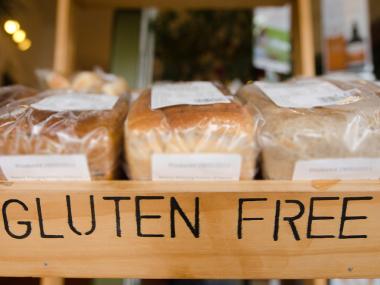The Big 8—Should You Avoid These Common Food Allergens?
Is there any reason to avoid foods that are common allergens even if you’re not allergic to them? Just how common are the most common food allergies?
It’s very important for people with severe food allergies to avoid the foods they’re allergic too. For them, eating even a small amount of nuts or seafood could be life-threatening.
Eight foods account for 90 percent of all food allergy reactions. In the industry, they’re often referred to as the Big 8.
In 2004, The Food Allergen Labeling and Consumer Protection Act was put in place to make life a little bit easier and safer for these folks. It mandates that food labels must declare whether or not a product may contain allergens from milk, eggs, fish, shellfish, tree nuts, peanuts, wheat, and soybeans. You may have noticed this information on packaged foods, right underneath the list of ingredients in bold type. It might say something like: Contains milk and eggs.
Although over 200 different food allergens have been identified, these eight foods account for 90 percent of all food allergy reactions. In the industry, they’re often referred to as the “Big 8.” But in fact, allergies to some of the Big 8 are a lot more common than others.
How common are the most common food allergies?
According to a new review in the Journal Nutrition Today, milk or dairy is by far the most commonly diagnosed food allergy, affecting 2 percent of the adult population, or one out of every 50 people. The percentage of people who report being lactose intolerant is quite a bit higher. But lactose intolerance, which is a reduced ability to digest the lactose sugar in milk, is not a true allergy. Allergies are almost always reactions to proteins, and people who are allergic to milk are usually allergic to the milk protein casein.
Milk or dairy is by far the most commonly diagnosed food allergy, affecting 2 percent of the adult population, or one out of every 50 people.
Shellfish is the next most common food allergen, affecting 1 in 65. Fish, nuts, eggs, wheat, and peanuts all affect fewer than 1 in 100 people. Interestingly, soy allergy is only believed to affect 1 in 1000 people. So, the Big 8 is really more like the Big 7 plus 1. The inclusion of soy in the list of common allergens may create the impression that soy allergy is much more common than it is.
Many consumers also misinterpret required allergen labeling to mean that these foods should be avoided even by people who don’t have an allergy. This impression is reinforced by front-of-package labeling claiming that products are “free” of various ingredients. While this is helpful information for people who have a reason to avoid those ingredients, it doesn’t necessarily mean that the product is healthier or more nutritious.
Does eating clean mean avoiding allergens?
These days, a lot of folks are attracted to the idea of “eating clean.” I put that term in quotes because no one knows exactly what that means. To some, it means avoiding all processed foods. For others, it’s about avoiding certain ingredients or additives. Some people think of it as more of a gut feeling than a strict definition. They might interpret foods without any allergens as being somehow cleaner. But the absence of an ingredient that 1-2 percent of the population is allergic to doesn’t make a food cleaner. The packaging declaration is solely to protect that small fraction of the population who need to avoid them.
Eating a food frequently doesn’t cause you to develop an allergy to it. If anything, the opposite appears to be true.
Some might even avoid foods containing soy or wheat in the belief that repeated exposure might cause allergies to develop. But this is not at all the case. Eating a food frequently doesn’t cause you to develop an allergy to it. If anything, the opposite appears to be true. Children who are exposed to peanuts early in life, for example, are less likely to develop peanut allergies.
Let me clarify, however, that eating a food is not a way to treat an existing food allergy. Right now, avoiding the allergen is the only way to prevent a potentially dangerous reaction. People with severe food allergies should also be aware of the signs of a food reaction and equipped to respond quickly if they are accidentally exposed.
But there is some exciting research in the pipeline that may soon offer new treatments that could reduce reactions to existing food allergies. We may one day even be able to use gene editing technology to create strains of peanuts or wheat that don’t contain the protein that causes the allergic reaction!
No reason to avoid allergens unless you are allergic
All of the foods included in allergen labeling are highly nutritious foods. Soy, milk, fish, and eggs are all sources of high-quality protein. Nuts and fish deliver healthy fats. Soy, wheat, and nuts also provide fiber and a variety of health-promoting compounds. Assuming that you do not have an actual allergy or intolerance, there would be no reason to avoid them or to prioritize foods that exclude them. In fact, building a healthy and nutritious diet is a lot easier when you do include them.
You May Also Like…






